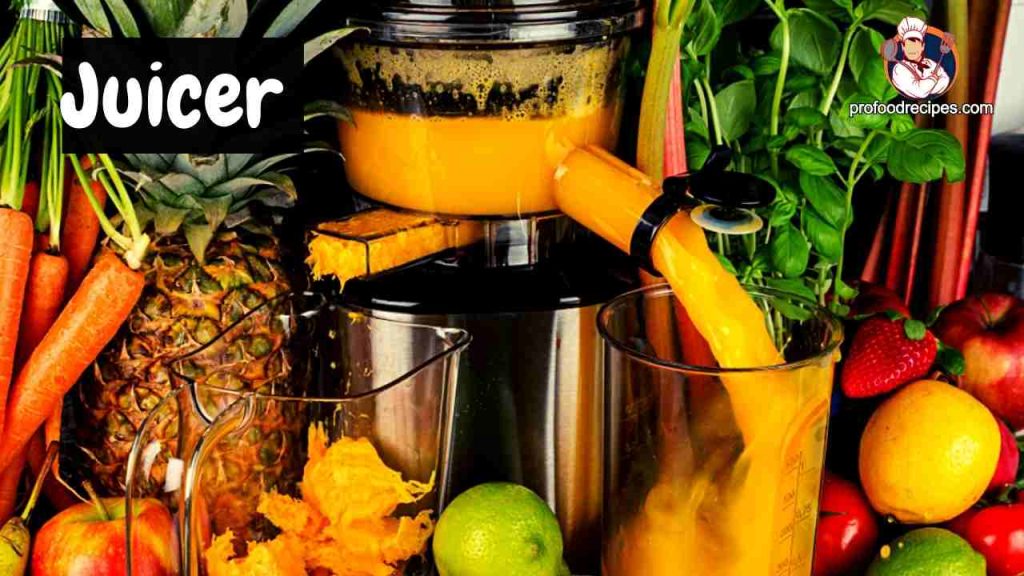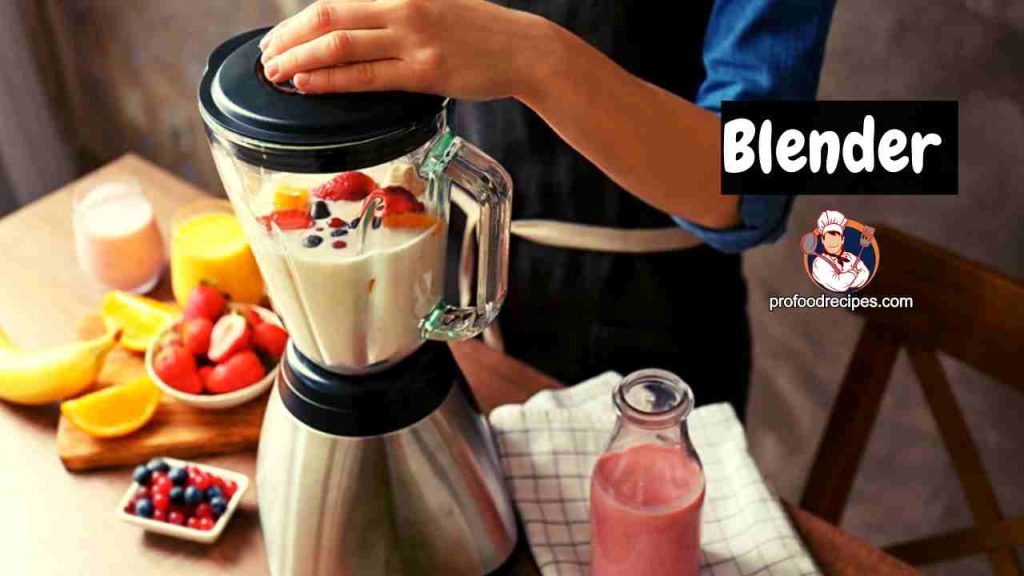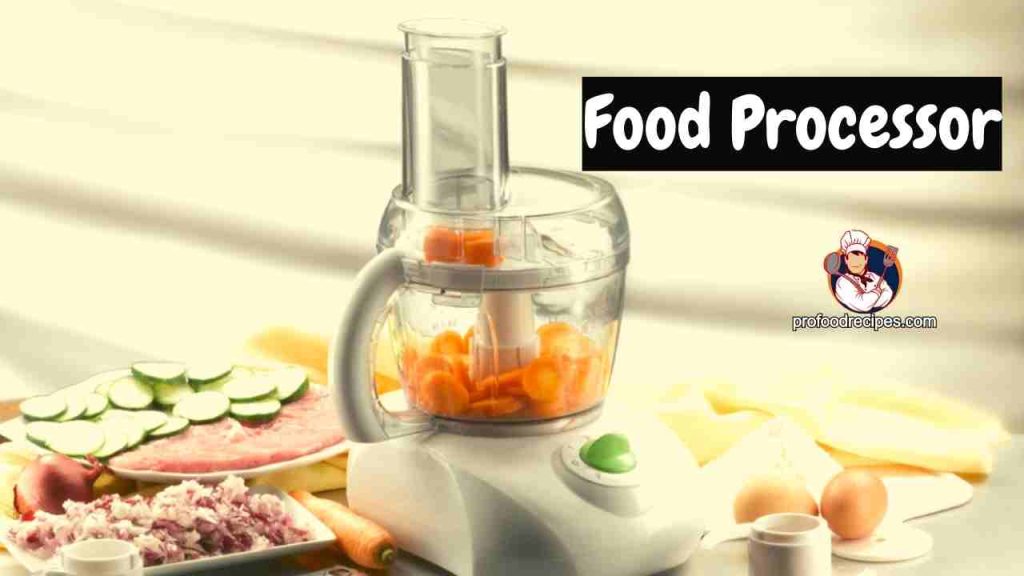Last Updated on December 4, 2022 by Amanda P. Brown
Juicers are the most efficient kitchen appliance for obtaining juice from fresh fruit and vegetables. A juicer is an excellent way to get extra nutrients without increasing your food consumption.
A blender’s functional range is extensive; it can work as a food processor and a juicer. As blenders are designed to break down tough foods into more manageable chunks, you’ll need to add some water to make your pulp more drinkable.
A food processor has several advantages over a blender or juicer, including the ability to precisely mince and chop foods, bulky blitz concoctions, and combine dry components.
However, each One has a different working process. Read the following article to learn more about Juicer Vs Blender Vs Food Processor and how each appliance works.
Juicer Vs Blender Vs Food Processor
Table of Contents
Juicers, blenders, and food processors are the most useful appliances in the modern kitchen. These appliances contribute a lot to helping the kitchen work.

The word “juicer” effectively describes the appliance’s primary purpose. This tool’s only function is to squeeze pulp from fruits and vegetables to collect the juice therein. The juicer has a rapidly rotating metal blade that rotates against the mesh filter.
A juicer helps you to consume fruits and vegetables quickly, and a blender for processing fruits and vegetables such as smoothies, dips, and iced cocktails.
The blender’s job is to puree, mash, and chop whatever you throw in it. Unlike similar devices, this One doesn’t require the user to first separate the food constituent parts before processing them.
The blender is perfect for blending soups and mixing beverages. A food processor has a wide bowl and several blades, whereas a blender has a tall container and just one blade.
Dicing and chopping harder foods is a breeze with a food processor due to its stronger blades. As opposed to blenders, food processors may function just fine without adding any additional liquid. With the help of a food processor, meal preparation time can be drastically reduced, which suggests that healthy meals can make.
1. Juicer

The juicer is widely known as an extractor. A juicer extracts juice from herbs, vegetables, and fruits by grinding, crushing, or squeezing. In addition, this will yield thinner juice by separating the seeds, pulp, and skin in your juicer in a very short time.
However, if you want to avoid overeating and eat full of vitamins and minerals, a juicer will help you greatly.
Fruits You Can Use
- Pineapple
- Melons(watermelon, cantaloupe, honeydew)
- Grapes
- Berries
- Apples
- Citrus(limes, oranges, lemons, etc.)
- Kiwis
- Pears
Vegetables You Can Use
- Carrots
- Tomatoes
- Kale
- Cucumber
- Spinach
- Beets
- Broccoli
- Celery
Pros of Juicer
- Affordable and available
- Sufficient, straightforward process
- Easy to clean up and maintenance
- Stainless steel construction
- Basket hand balanced
- Superior stability
- Cantilever-style latch arms
- The device produces 20 to 30 percent more juice
- Better for diet quality
- It helps to consume more fruits and vegetable juice.
Cons of Juicer
- High cost
- Consists Low fiber
- It is very time-consuming
- Lack of Convenience
How Juicer Work?
The juicer shreds vegetables and fruits at 6,000-14,000 RPM as they come into contact with the blades through the feed tube. The juice is thrown sideways with the help of the centrifugal force of the rotating basket. The mixture is then pushed into glasses or jugs through a sharp screen.
However, there are differences between juicers depending on the type of juicing process. Because each juicer has a different working pattern, the load-carrying capacity is different.
Here I will talk about two common juicers, one is centrifugal, and the other is a masticating juicer. Centrifugal juicers are relatively cheap and great with less effort. This machine separates the juice in a rapid process and carries up to 30 percent solids such as stems, skins, and seeds. And best for those who want to drink juice as soon as it’s ready for the nutritional benefits.
Masticating juicers, on the other hand, are widely known as slow juicers. This juicer forces fruits and vegetables against a sharp screen at 80 to 100 rpm in a slow process to pulverize them. So it’s great if you want to spend some time boosting the nutritional value of your juice. Hence, you can select the juicer of choice based on your needs.
Read: Is Orange Juice Good for Weight Loss?
2. Blender

Blender is one of the three systems’ most common and oldest things. It’s great for making smoothies, milkshakes, soups, and sauces. You must add some water to the pulp from the blender to the food processor to complete the juice preparation process. Therefore, you’ll have a thick juice consistency.
Fruits You Can Use
- Peach Banana Smoothie.
- Strawberry Banana Smoothie.
- Peanut Butter Banana Smoothie.
- Strawberry Kiwi Smoothie.
- Tropical Green Smoothie.
- Pineapple Coconut Smoothie.
- Mixed Berry Smoothie.
Vegetables You Can Use
- Avocado
- Sweet Potatoes
- Beets
- Carrots
- Winter Squash
- Cauliflower
- Peas
- Leafy Green Vegetables
- Celery
- Cucumber
- Zucchini
Pros of Blender
- Incredibly versatile
- Lase wastefully
- Get more fiber
- It is very easy to carry.
- This machine can save electrical energy
- Eating nutrient fruits and vegetables becomes much easier with a blender
- Used in sauces and savory spice mixes
- Blended foods provide better nutrition
- It is simple to clean and takes up little space.
- It is healthy when smoothed from a blender
- Saves your time.
Cons of Blender
- Low capacity
- The rotating of the machine is not strong.
- Specifications are incomplete
- Solid foods and very thick liquids become difficult for the machine
How Blender Work?
A blender is a versatile appliance. In essence, a blender has a motor at the bottom and a control panel with multiple speed settings. The motor drives the sharp blades attached to it to rotate. Then the blade turns against the elements and gets stuck in the glass or plastic jar. In this rotating process, the blades chop or puree the ingredients, breaking up the solid food mixture.
It also helps to blend liquid ingredients like frozen juices and drinks. And the blender’s pitcher has a rubber seal that prevents food from spraying out.
3. Food Processor

Food processors and a wide variety of blenders have many similarities. And this food processor has a wide work bowl and multiple blades to easily puree and shred cooking ingredients.
This processor preserves the nutritional value of the food and makes the prepared food taste better. Moreover, you can easily clean this device in the dishwasher.
Fruits You Can Use
- Strawberries.
- Blueberries
- Banana
- Papaya
- Pineapple
Vegetables You Can Use
- Onions
- Winter Squash
- Carrots
- Root Vegetables
- Celery
- Broccoli
- Garlic
Pros of the Food Processor
- It helps to make everything from pie dough to desserts.
- The blade of the tool is strong.
- A food processor can perform various tasks, such as mixing, whisking, slicing, chopping, and pureeing.
- Work gets easier.
- Affordable price points are offered.
- Its compact size requires the least storage.
- Less time-consuming.
Cons of Food processor
- It makes a lot of noise
- It is not as operative as hand-chopped or sliced food
- Energy efficient.
How Food Processor Work?
A food processor has a feed tube, numerous blades or discs, and a bigger bowl capacity than a food chopper. During the cutting and shredding process, the food is fed through the feed tube into the discs located right below.
The blades in the bowl of a food processor may also be used to pulverize, puree, and mince ingredients. However, it will give you an excellent nutrient content in a very short period.
Read More: How to Make Starbucks Iced Guava White Tea Lemonade at Home?
Can You Use a Blender as a Juicer?
A blender is not a suitable substitute for a juicer. Because blenders don’t separate the fiber from the pulp, they mix the ingredients to a thick consistency. A juicer extracts juice from produce by squeezing, crushing, or grinding the food until only the watery juice remains and the pulp and other solids are removed.
Can a Blender Perform as a Food Processor?
It will depend on the texture and consistency of the ingredients in your kitchen as to what type of appliance you need. For example, if your food contains a lot of liquids, such as soups, smoothies, and iced drinks, you should choose a blender as it can easily handle this task.
Instead, if your food consistency is tough, you can opt for a food processor, as it requires a lot of labor-intensive handling (chop and slice).
Which is Better for Juicing: a Blender or a Food Processor?
If you want to make juice, don’t use a blender; instead, opt for a food processor. In addition, food processors can chop and make sauces, smoothies, and other foods with their sharp blades and strong engines.
Moreover, the food processor is complementary to the blender because it can do all the tasks of the blender.
What is a Healthier Juicer or Blender?
Both blenders and juicers are healthy because both provide us with many health benefits. However, you can consume more portions of wholesome fruits and vegetables daily with their assistance. Furthermore, by lowering blood pressure and bad cholesterol, both can aid in the prevention of heart disease.
Final Verdict
I have tried my best to cover the juicer vs blender vs food processor on the above. Also, hoping you’ll find this article helpful in deciding which kitchen equipment to employ for a certain task.
Because of how each appliance is made, each One has a unique motor and blade that contributes differently to the cooking process. Therefore, you must choose the ideal appliance for the job depending on your requirements, tastes, spending capacity, and nutritional trends.
You May Also Like to Read
- Wok VS Frying Pan – Which One to Use?
- How to Care for Stainless Steel Cookware?
- How to Cook With Stainless Steel Cookware?
